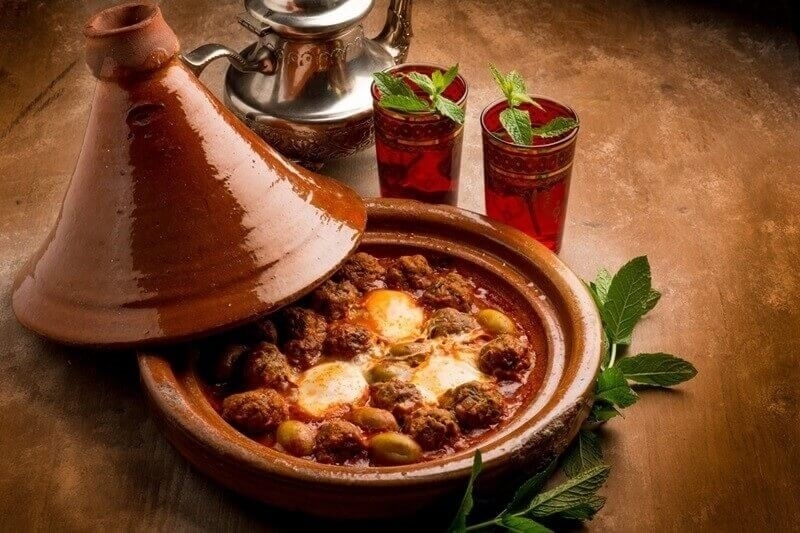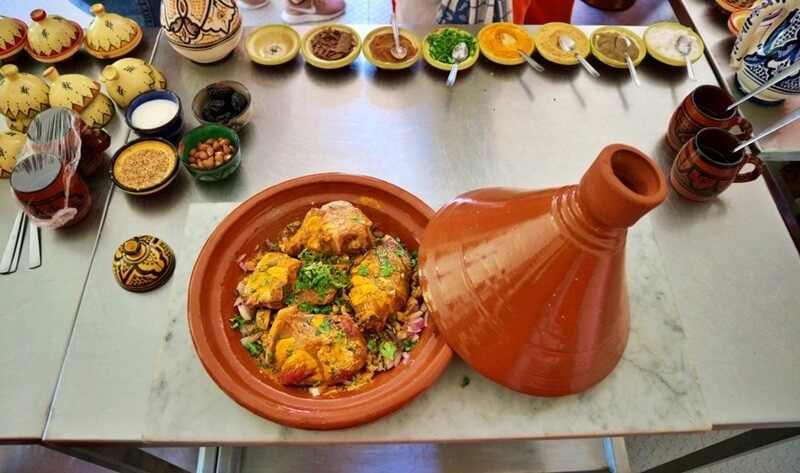
Making a Moroccan tagine recipe at your place is one of those moments you will always remember and tell your family about. You are probably familiar with most of the ingredients used in this recipe, but do you know all those flavors and textures that come from one dish?
Tagine is actually the name of a very slow earthenware pot that is used for cooking in and also the name of the food that is cooked. The best thing about this dish is its very flavorful, vibrant, and comforting taste. This article will walk you through the recipe of vegetable tagine and the use of herbs and spices as adding the warming factor.
The traditional Moroccan style of cooking can be noticeably different from others.
The word tagine is the name of a dish that is a cultural feast. A family or friends group is probably the next one that would enjoy the meal served directly from the pot at the table alongside a crusty bread or couscous in Moroccan houses. It's this coming together that really lifts the dish to something special.

Here’s a step-by-step guide on cooking the Moroccan Tagine Recipe:
Prepare a simple vegetable tagine and list the items needed:
If you want to taste the authentic Moroccan lamb tagine, add some pieces of lamb at the start and cook it for a longer time instead of a vegetable tagine.
The base of the tagine or pot is where you start by putting the olive oil and heating it. Next, go in the sliced onion and garlic, cook them until they release their aroma and get tanned. It is at this point that the foundation for the North African stew is laid with the addition of spices and the inviting smell is beginning forming.
Add in your cumin, turmeric, paprika and cinnamon. One minute of stirring will be enough for the spices to emit their oils and flavor. This step is crucial as it adds the little extra warmth and one can tell from the aromas that it is going to be a tagine dish.
Since the carrots and potatoes take the longest to cook, it is best to place them at the bottom. Then comes the zucchini, bell peppers, and finally the chickpeas. You can finish with the tomatoes and dried fruit. The layers help keep their shape and ensure even cooking.
Remove the vegetable broth or water from the pot and add enough liquid to cover the vegetables halfway up. This way, the vegetables can steam with less chance of becoming mushy and definitely absorb flavor from the liquid.
Put the lid on the tagine and lower the heat to low. Cook it slowly for 45 minutes to 1 hour approximately. For instance, if lamb were to be used, the cooking time would have to be extended up to 2 hours until the meat becomes tender. This stage is the best one for slow-cooked African meals—the longer you cook, the more intense the flavor becomes.
Right before serving, sprinkle some chopped cilantro and parsley on top of the dish. The herbs not only add flavor to the stew but also bring freshness. Serve the vegetarian tagine recipe hot along with bread or couscous, which you have previously heated in the microwave.
Here are some helpful tips for perfecting your Tagine:
Making a tagine is nothing but an act of following through on all stages, and yet it is not merely about that – it is about experiencing the slow process of flavor building. It stands for warmth and generosity of the Moroccan community. Regardless if you make a plain veggie one or treat yourself with Moroccan lamb tagine, the meal is an invitation for everybody to interact and have fun together.
The traditional Moroccan cooking method relies on patience and harmony. Each ingredient contributes something: the smoky cumin flavor to the sweet dried fruit. It becomes a feast of shared memories when you eat it with your family and friends; thus, the dish becomes not only nourishing but also comforting.
This vegetarian tagine recipe is a plant-based, fiber, vitamin, and mineral-rich meal. There is a diversity of vegetables, all with healthy vitamins/minerals provided by the vegetables, and chickpeas, with protein.
As far as health benefits, olive oil is known to be heart-healthy, and this recipe includes spices that are high in antioxidants. It's satisfying, but not heavy, so it can be eaten as a wholesome meal.
You can spice these variations up in any manner you want while still enjoying the core of North African stew with spices in different ways and keeping the soul of the dish intact.
Tagine is great with:
Creating a home-made Moroccan tagine recipe may seem like a lengthy and challenging process, but when you break it down into stages, it's quite simple. From preparing the base with onions and spices to layering the vegetables and letting the cooking happen, each stage has its own set of flavors and results. The final product is a rustic dish that captures the heart of traditional Moroccan home cooking and the joy of communal eating.
Whether you choose a vegetable version or a Moroccan lamb tagine, you are not only creating a dinner, but you are creating a piece of art that represents your culture.
This content was created by AI